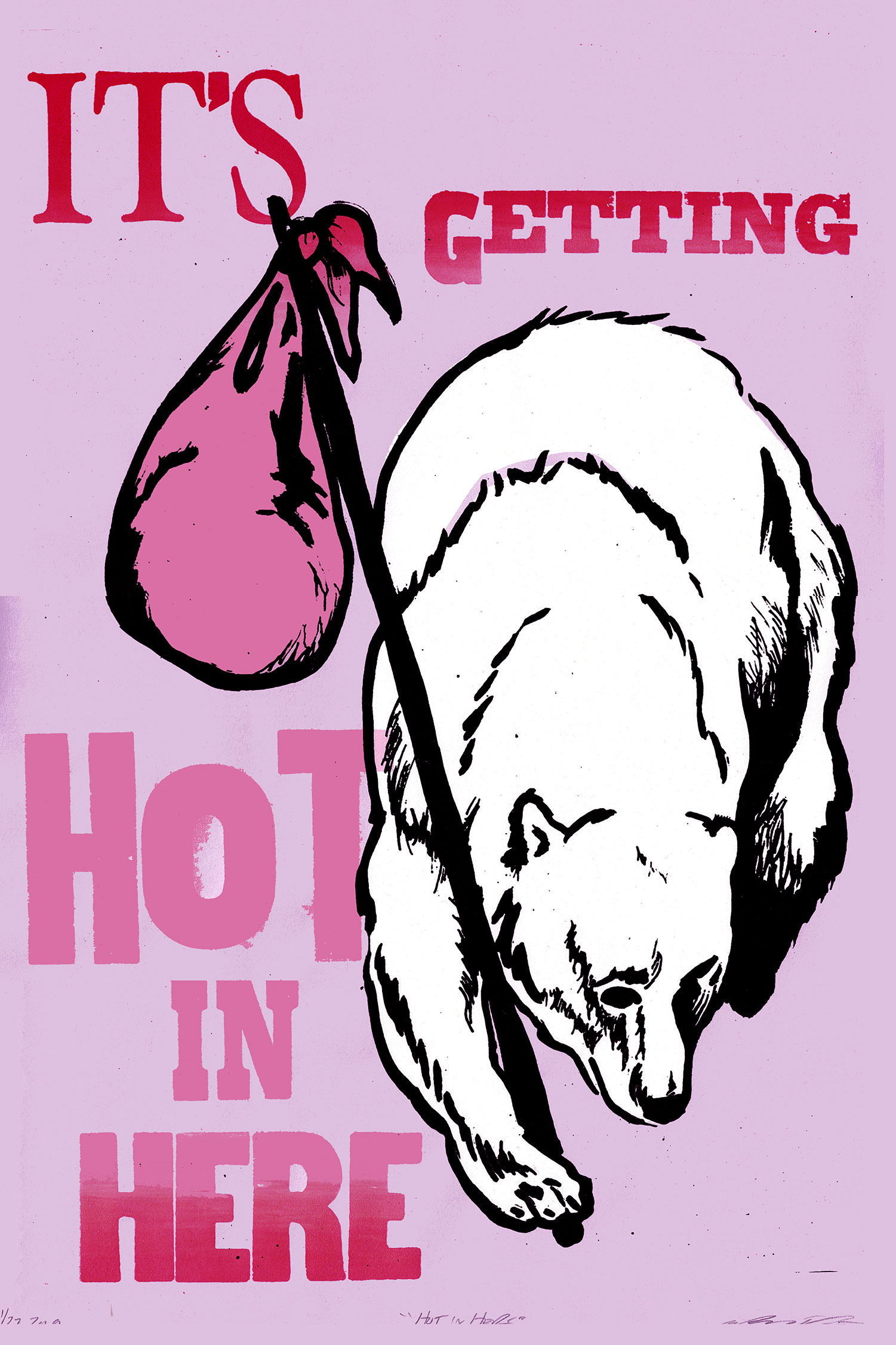Have you ever walked into a room, felt a sudden warmth, and perhaps, just perhaps, thought to yourself, "Wow, it's getting warm in here"? That feeling, that simple observation, can mean so much more than just a rising temperature. It’s a phrase that, in a way, holds a surprising amount of depth, touching on everything from grammar quirks to cultural touchstones. Really, it does.
This common expression, "its getting hot in here," often pops up in our daily chats, sometimes literally about the warmth, other times with a playful wink. It can signal a shift in atmosphere, a moment of excitement, or even a call for a change. So, there is a lot more to unpack than you might first imagine, you know?
Today, we're going to peel back the layers of this intriguing phrase. We'll explore its obvious meaning, but also delve into a common grammatical puzzle it presents, and even touch upon a huge cultural moment it inspired. It’s quite a journey for just a few words, actually.
Table of Contents
- The Literal Warmth: When the Temperature Really Rises
- The Grammatical Puzzle: 'Its' vs. 'It's'
- The Cultural Echo: Nelly's "Hot in Herre"
- When to Use the Phrase: More Than Just Thermometers
- People Also Ask About "Its Getting Hot in Here"
- A Final Thought on This Phrase
The Literal Warmth: When the Temperature Really Rises
When someone says, "its getting hot in here," the most straightforward meaning, of course, points to the actual temperature. Perhaps the air conditioning stopped working, or maybe a room full of people is simply generating a lot of body heat. It’s a pretty common observation, especially as the seasons change, or perhaps after a particularly energetic gathering. You might feel a little bit uncomfortable, start to fan yourself, or even notice a sheen on your brow. This simple statement acts as a direct report on the physical environment, signaling a need for cooler conditions, or maybe just a window opened wide. It’s just a practical thing, really.
Think about a kitchen, for instance, during a big family dinner. The oven has been on for hours, the stove is buzzing with pots and pans, and everyone is moving around. Naturally, the warmth builds up. Or consider a gym class where everyone is working up a sweat. The energy, the movement, all contributes to a noticeable increase in the air's warmth. In these moments, saying "its getting hot in here" is a simple, direct way to describe what's happening, a very clear observation about the immediate surroundings. It’s about the tangible feeling of warmth, pure and simple, you know?
The Grammatical Puzzle: 'Its' vs. 'It's'
Now, here's where things get a little bit interesting, and where "My text" offers some really helpful insights. The phrase "its getting hot in here" often gets written incorrectly because of a very common mix-up between "its" and "it's." These two words sound exactly the same when you say them out loud, but they mean completely different things and have different jobs in a sentence. It’s a classic point of confusion for many, and honestly, it’s easy to see why, too.
As "My text" clearly states, “it’s” and “its” are homophones, which often leads to confusion as they have different grammatical functions but sound the same. To get a better grasp of this common point, we can look closely at each one. This distinction is pretty important for clear communication, especially in writing. So, let’s break it down a little, shall we?
"It's": The Contraction for "It Is" or "It Has"
The word "it's" with an apostrophe is a contraction. This means it’s a shortened form of two words put together, with the apostrophe taking the place of the missing letters. According to "My text," "It's is a contraction and should be used where a sentence would normally read it is or it has." This apostrophe, you see, indicates that part of a word has been removed. It’s a pretty neat trick for making sentences a little bit shorter, or perhaps more conversational.
Think about it like this: if you can replace "it's" with "it is" or "it has" and the sentence still makes perfect sense, then "it's" with the apostrophe is the correct choice. "My text" gives us some excellent examples: "Can you hear that noise, Where do you think it’s (it is) coming from?" Here, "it's" clearly stands for "it is." Another good one is, "It’s (it is) nearly the end of the month." Or, for "it has," "It’s (it has) gone really quickly." In the sentence "it's going to be a fabulous night," "it's" is a contraction for "it is." So, when we say "it's getting hot in here," we really mean "it is getting hot in here." It’s quite straightforward once you remember this rule, you know?
"Its": The Possessive Pronoun
On the other hand, "its" without an apostrophe is a possessive pronoun. This word shows ownership or belonging. "My text" clarifies this beautifully: "Its with no apostrophe, on the.,Its is a possessive form of the pronoun it, meaning belonging to it." It’s like saying "his" or "hers" but for something that isn't a person. This form of "its" shows possession, while "it’s" is a contraction of "it is" or "it has." It’s a pretty important distinction to keep in mind, in a way.
"My text" offers some clear illustrations of "its" in action. For example, "the dog ate its food." Here, "its" shows that the food belongs to the dog. Another good one is, "The lake is beautiful in its own unique way." In this case, "its" refers to the lake's unique way. In both of these examples, “its” is acting as a possessive. So, if you're trying to say something belongs to "it," then "its" without an apostrophe is what you need. It’s a subtle but very real difference that makes all the sense, you know?
Why the Mix-Up Happens, Anyway
The confusion between "its" and "it's" is very, very common. "My text" points out that "most possessive nouns end in an apostrophe and." This is a key reason for the mix-up. For example, we say "the dog's bone" (the bone belonging to the dog), using an apostrophe 's' for possession. So, people naturally assume "its" should follow the same pattern for possession. However, "its" is an exception, like "hers" or "theirs," which don't use an apostrophe for possession. It’s a bit of a trick, isn't it?
Simply put, as "My text" reminds us, "the difference between its and it’s is,It's is a contraction of it is or it has,Its is possessive, referring to something belonging to 'it'." While they sound the same, their functions are entirely different. So, the next time you write "its getting hot in here," remember you're saying "it is getting hot in here," and you'll need that apostrophe. It’s a small detail, but it makes a big difference in how clearly your message comes across, arguably.
The Cultural Echo: Nelly's "Hot in Herre"
Beyond the literal meaning and the grammatical puzzle, the phrase "its getting hot in here" also has a really strong cultural footprint, thanks in large part to a very famous song. You might hear the phrase and immediately think of a specific tune, and that’s perfectly natural. It’s almost impossible to talk about "getting hot in here" without bringing up this particular piece of music. It’s quite an iconic track, honestly.
Origin and Impact: The Sound of a Summer
The song in question is "Hot in Herre" by American rapper Nelly. "My text" tells us that it was "released as the lead single from his second album, nellyville (2002)." It came out on "May 7, 2002, by universal records." This song became an absolute phenomenon. "Nelly's mammoth hit 'hot in herre' was the sound of the summer worldwide in 2002." It was everywhere, playing at parties, on the radio, in cars. It’s hard to overstate just how popular it was, really. The music video, by nelly performing hot in herre, (c) 2002 universal motown records, a division of umg recordings, inc, helped solidify its place in pop culture. It’s a song that just stuck, you know?
The track, provided to youtube by universal music group, truly defined an era for many people. It captured a specific vibe, a feeling of carefree fun and excitement that resonated globally. The energy of the song, its catchy beat, and those unforgettable lyrics made it an instant classic. It’s a good example of how a simple phrase can be lifted into something much bigger through art and music, arguably. The song just had that special something, apparently.
Lyrics and Vibe: Capturing the Moment
The chorus of "Hot in Herre" is what truly cemented the phrase in popular culture. The lyrics go: "(i said) its gettin hot in here (so hot) so take off all your clothes i am gettin so hot, i wanna take my clothes off." This part, often repeated, became instantly recognizable. "My text" includes snippets like "It's hot in, so hot in here / so hot in.,/ want a little bit of (uh, uh), and a little bit of (uh, uh) / just a little bit of, just a little bit." And also, "Hot in so hot in here so hot in i was like, good gracious ass bodacious flirtcatious, tryin' to show patience lookin' for the right time to." These lines perfectly capture the song's playful, energetic, and slightly rebellious spirit. It’s a mood, basically.
The song isn't just about literal heat; it uses the idea of "getting hot" as a metaphor for a party reaching its peak, a place where inhibitions are shed, and everyone is just having a really good time. It’s about the atmosphere becoming electric, almost sizzling with excitement. The repetition of "Hot in, so hot in here, So hot in, hot, oh!" in "My text" shows how the phrase became a rhythmic chant, synonymous with a good time. It’s a classic example of how music can take a simple observation and turn it into a universal feeling, you know?
When to Use the Phrase: More Than Just Thermometers
Knowing the difference between "its" and "it's" is important for writing, but understanding the various ways "it's getting hot in here" can be used is key for speaking. This phrase, with the correct "it's," goes beyond just reporting a temperature. It carries different shades of meaning depending on the situation. It’s a versatile little expression, actually.
Everyday Situations
Most commonly, of course, you'll use it when the air genuinely feels warm. You might say it in a crowded elevator, or perhaps in a car with the windows up on a sunny day. It’s a pretty natural reaction to physical discomfort caused by warmth. You might follow it up with a suggestion, like "Can we turn on the fan?" or "Let's open a window." It’s a direct, practical statement, usually aimed at finding a solution to the warmth. So, it’s quite useful in a very practical sense, you know?
But it also comes up in less extreme situations. Maybe you've been working hard, or just finished a particularly energetic activity, and you feel your body temperature rising. "Phew, it's getting hot in here!" could be a way to express that personal sensation. It’s about your own feeling of warmth, not necessarily the room's. This personal connection makes the phrase feel very human, a bit relatable, you know?
Figurative Uses
Then there are the figurative uses, where the phrase takes on a different kind of warmth. It can mean a situation is becoming intense, exciting, or even a little bit awkward. Imagine a debate where the arguments are getting really heated, or a competition where the stakes are rising. Someone might jokingly say, "Well, it's getting hot in here!" It’s a way to acknowledge the rising tension or excitement without being overly serious. This kind of use adds a layer of playfulness or drama to the conversation, arguably.
It can also be a nod to the Nelly song, especially in social settings. If a party is really starting to pick up, the music is loud, and everyone is dancing, someone might exclaim, "It's getting hot in here!" It’s a way to capture the energy and the fun, invoking the spirit of the song. This use is more about the vibe, the atmosphere, rather than the actual temperature. It’s a bit of a cultural shorthand, basically, and people tend to understand it right away.
People Also Ask About "Its Getting Hot in Here"
Here are some common questions people have about this phrase:
What does "its getting hot in here" really mean?
Well, it can mean a couple of things. Most simply, it means the temperature in a specific place is rising and becoming uncomfortably warm. However, it also has a figurative meaning, suggesting a situation is becoming intense, exciting, or even a bit awkward. It’s quite a versatile phrase, actually.
Is it "its" or "it's" when talking about heat?
When you're talking about the temperature, or any situation where you mean "it is," you should always use "it's" with the apostrophe. "It's" is a contraction for "it is" or "it has." "Its" without an apostrophe shows possession, like "the dog wagged its tail." So, it’s always "it's getting hot in here," you know?
Where did the phrase "Hot in Herre" come from?
The popular song "Hot in Herre" was released by American rapper Nelly in 2002. It was the lead single from his album "Nellyville." The song's catchy chorus, which includes the phrase, made it a massive global hit and the sound of that summer. It’s a pretty well-known piece of music history, arguably.
A Final Thought on This Phrase
So, the next time you hear or say "it's getting hot in here," take a moment to consider all the layers it carries. Is it just the temperature, or is there a deeper meaning at play? Perhaps it’s a nod to a classic song, or maybe it’s a subtle reminder of a tricky grammar rule. It’s quite fascinating how a simple collection of words can hold so much, isn't it? You can learn more about grammar rules on our site, and perhaps even explore the history of popular phrases.



Detail Author:
- Name : Tillman Macejkovic
- Username : dickinson.ottilie
- Email : dayna.waelchi@yahoo.com
- Birthdate : 2004-11-28
- Address : 8456 Russel Gardens Lake Golden, MO 58389-3996
- Phone : (574) 285-2160
- Company : Ward-Stehr
- Job : Sculptor
- Bio : Facilis vero maxime iusto. Iusto totam voluptate sapiente et repellendus reiciendis ea. Et quibusdam praesentium quae porro. Ipsam nemo enim odit aut.
Socials
instagram:
- url : https://instagram.com/agleichner
- username : agleichner
- bio : Fuga tenetur deserunt eveniet ullam. Et harum enim odio hic et quod. Assumenda esse et nulla cum.
- followers : 1390
- following : 732
facebook:
- url : https://facebook.com/agleichner
- username : agleichner
- bio : Debitis sequi architecto fugiat saepe voluptatem. Eum at culpa beatae.
- followers : 6479
- following : 86
twitter:
- url : https://twitter.com/alexandro3095
- username : alexandro3095
- bio : Dolorem voluptate temporibus iure et asperiores occaecati. Voluptatem vel consequuntur rerum praesentium. Dignissimos et voluptas dicta ut.
- followers : 6034
- following : 741

